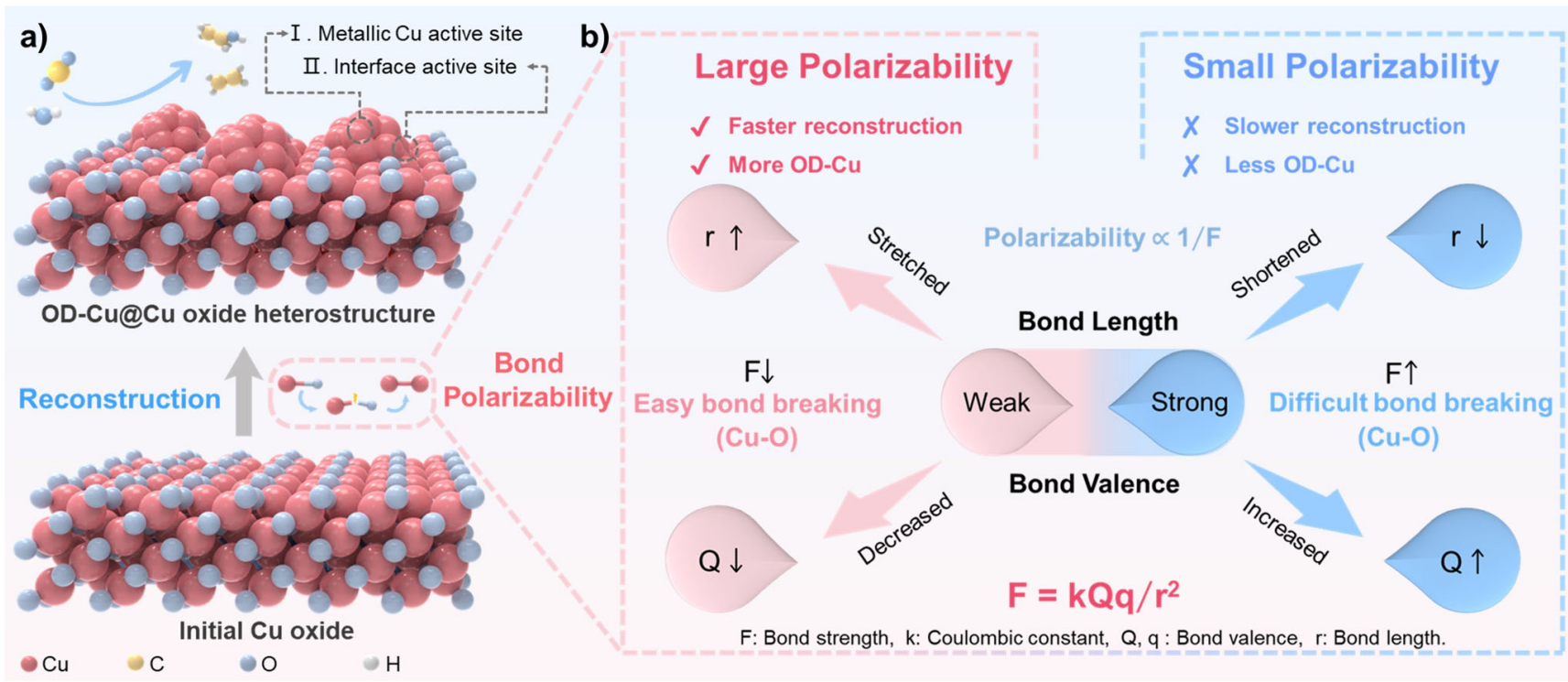Huanhuan Tao, Shaohuan Hong, Dr. Wei-Hsiang Huang, Prof. Bin Chen, Dr. Yiyuan Yang,
Zhongliang Dong, Mingkai Xu, Bowen Li, Prof. Min-Hsin Yeh, Dr. Chih-Wen Pao, Prof. Zhe Jia, Dr. Zhiwei Hu, Prof. Feng Gong, Prof. Yinlong Zhu, Prof. Wanlin Guo
Angew.(IF:16.9),First published: 10 October 2025
Copper (Cu) oxides hold great potential for electrochemical synthesis of multi-carbon (C2+) products from CO2 reduction reaction (CO2RR), but a clear picture correlating chemical bond characteristics in pristine Cu oxides with inevitable reconstruction during CO2RR remains underexplored. Herein, we report our findings in the regulation of Cu─O bond polarizability in layered cuprates (Ln2CuO4, Ln = La, Pr, Nd, Sm, and Gd) by an A-site rare-earth modulation strategy, to promote surface reconstruction toward high-efficiency C2+ electrosynthesis. In particular, the optimized Pr2CuO4 bulk material with largest bond polarizability exhibits the best performance, achieving a Faradaic efficiency of ∼80% for C2+ products and a C2+ partial current density of 376.2 mA cm−2 at −1.7 V versus RHE as well as maintaining robust durability at 200 mA cm−2 in a membrane electrode assembly. Experimental and theoretical results reveal that larger Cu─O bond polarizability, characterized as increased bond length and decreased valence state, accelerates the Cu-O bond breaking that can lead to the formation of ultrasmall, highly dispersed, and strained Cu nanoparticles. These reconstructed metallic Cu particles, together with Cu/Pr2CuO4 interface, function as dual active sites to improve *CO coverage and lower the energy barrier for C─C coupling, resulting in the enhanced C2+ selectivity.

--校内链接--
--校外链接--

微信公众号